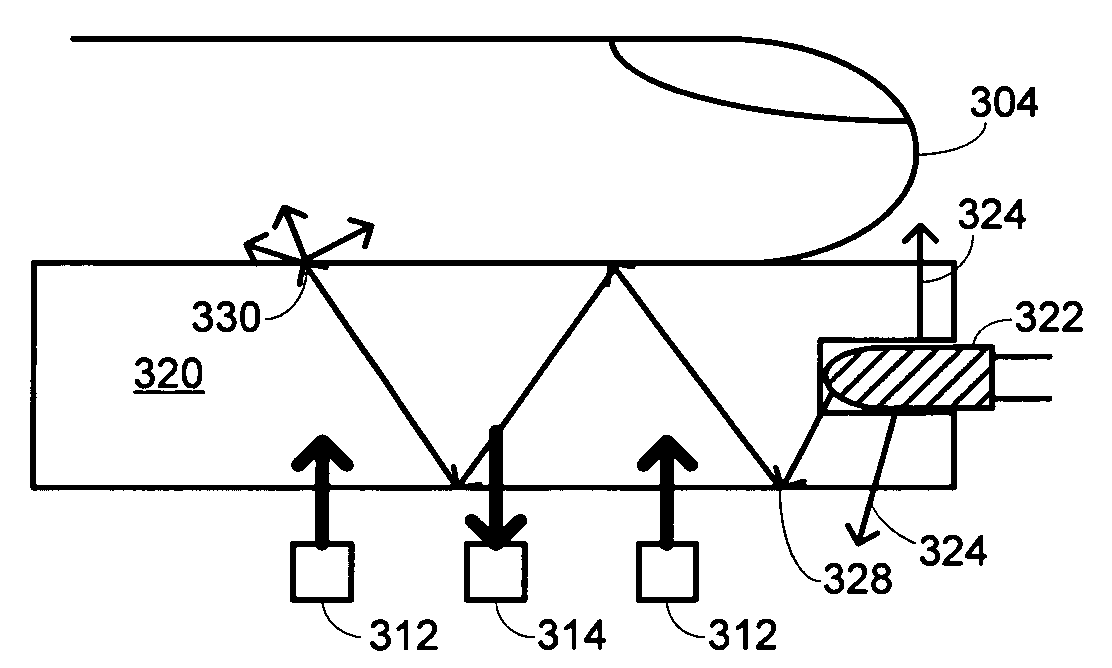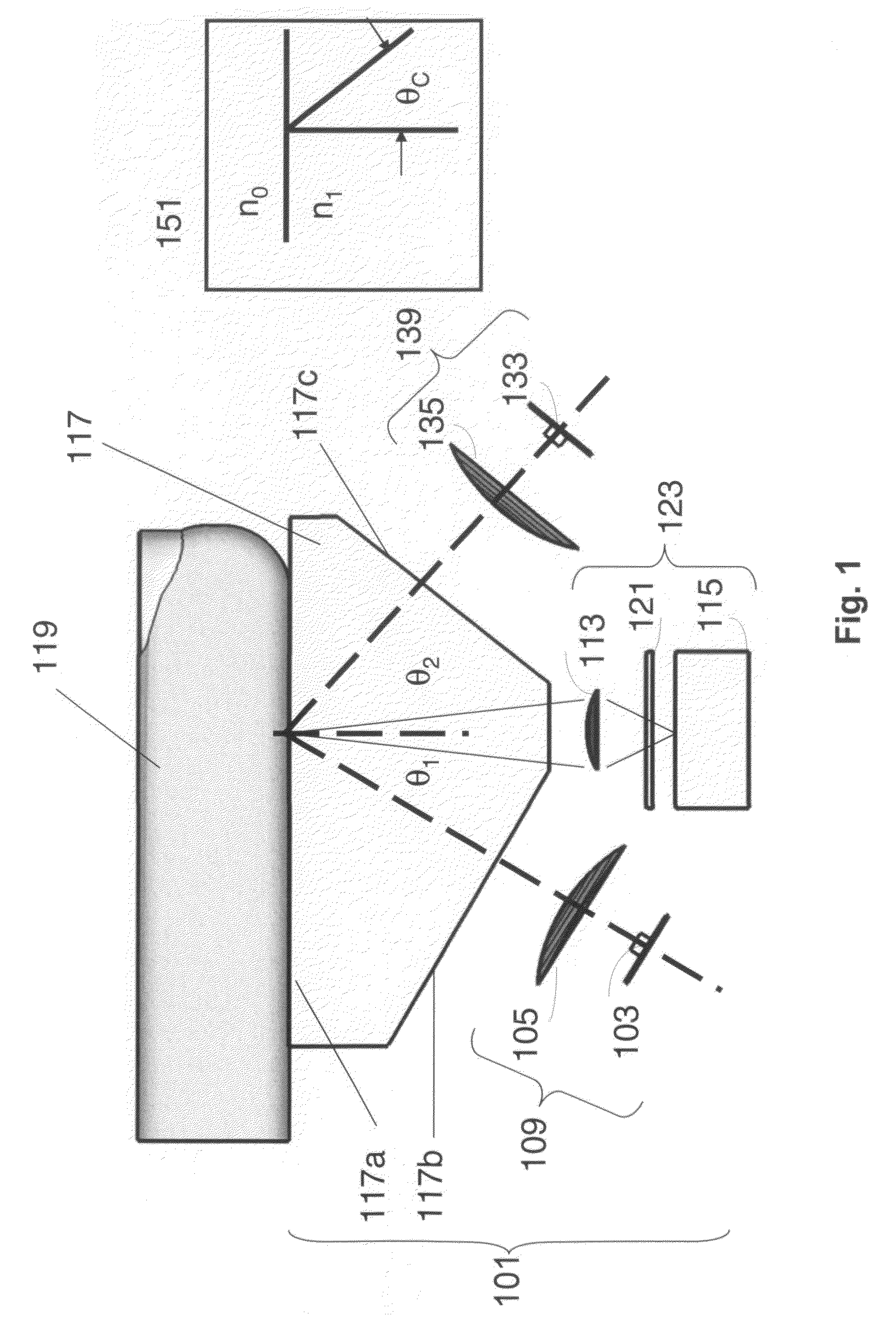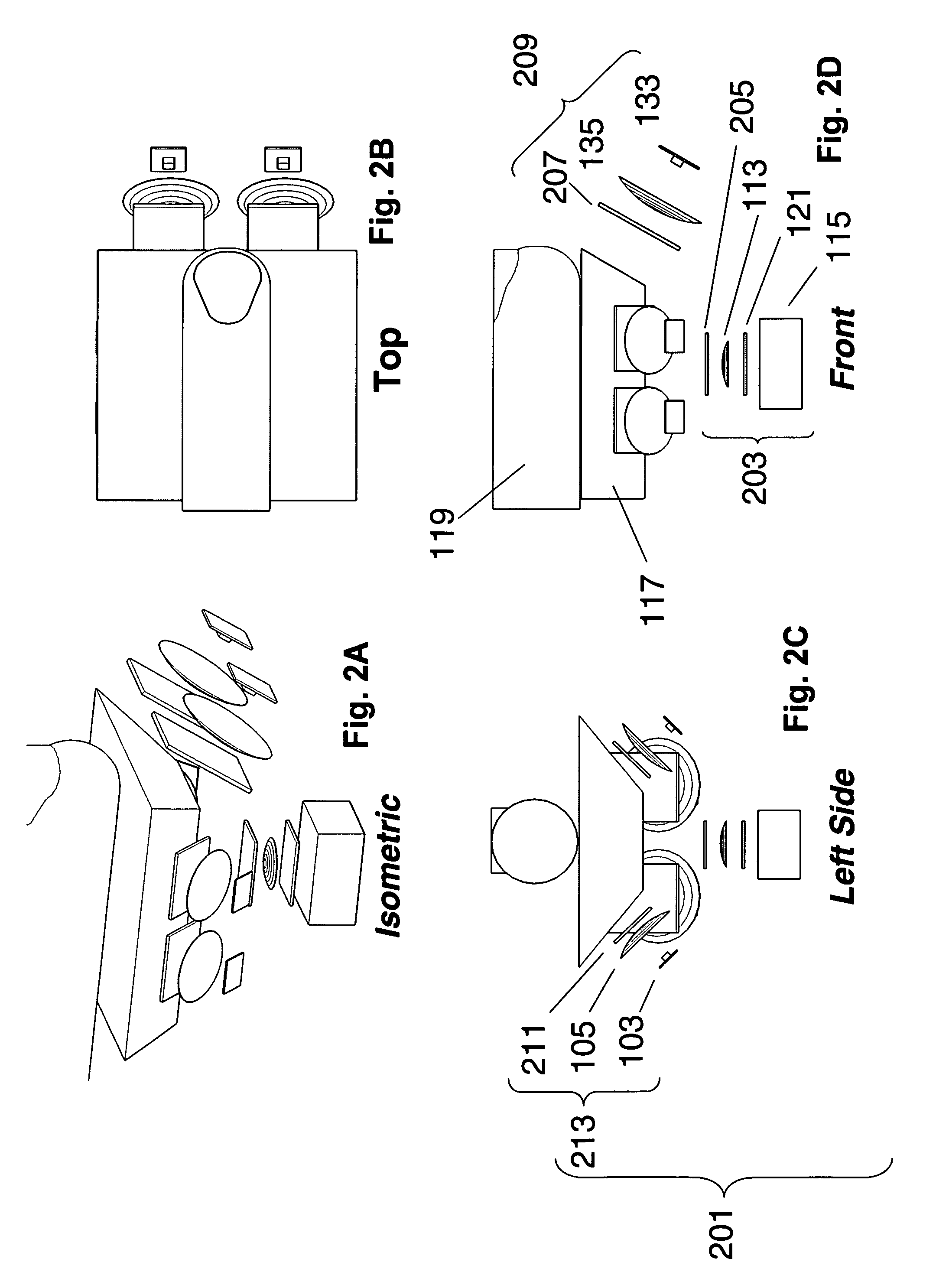Hygienic biometric sensors
a biometric sensor and hygienic technology, applied in the field of biometric sensors, can solve the problems of affecting the accuracy of contact sensing techniques, unable to detect the presence of skin contact with a surface,
- Summary
- Abstract
- Description
- Claims
- Application Information
AI Technical Summary
Benefits of technology
Problems solved by technology
Method used
Image
Examples
Embodiment Construction
1. Overview
[0052]Embodiments of the invention provide methods and systems that allow for the collection and processing of biometric measurements. These biometric measurements may provide strong assurance of a person's identity, as well as of the authenticity of the biometric sample being taken, and may be incorporated within a number of different types of devices, such as cellular telephones, personal digital assistants, laptop computers, and other portable electronic devices, as well as stand-alone devices for physical or logical access. The common characteristic of the methods and systems of the present invention is the application of multiple distinct optical configurations used to collect a plurality of image data during a single illumination session. In some instances, methods and systems are provided for the collection and processing of data using a sensor with two distinct imaging systems. In other instances, the methods and systems disclosed pertain to data collected using a...
PUM
 Login to View More
Login to View More Abstract
Description
Claims
Application Information
 Login to View More
Login to View More - R&D
- Intellectual Property
- Life Sciences
- Materials
- Tech Scout
- Unparalleled Data Quality
- Higher Quality Content
- 60% Fewer Hallucinations
Browse by: Latest US Patents, China's latest patents, Technical Efficacy Thesaurus, Application Domain, Technology Topic, Popular Technical Reports.
© 2025 PatSnap. All rights reserved.Legal|Privacy policy|Modern Slavery Act Transparency Statement|Sitemap|About US| Contact US: help@patsnap.com



